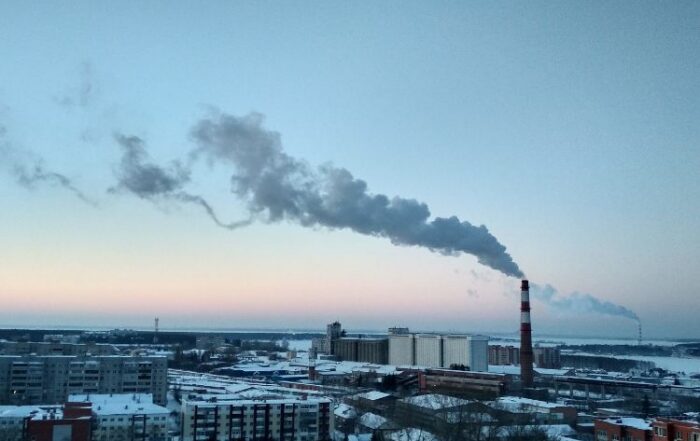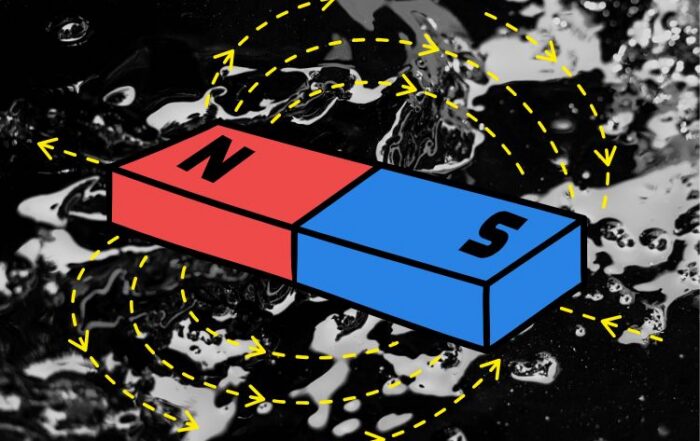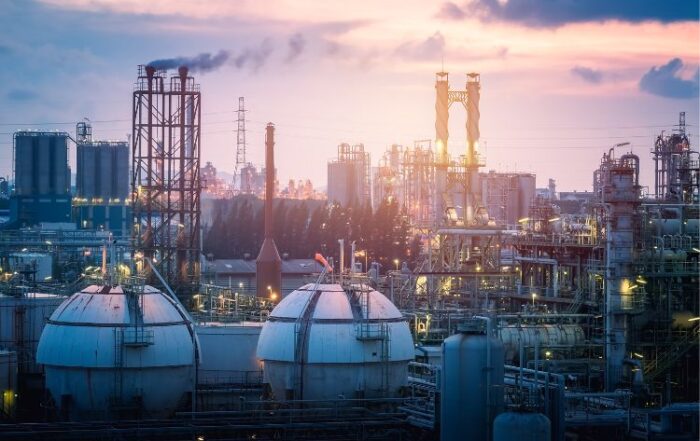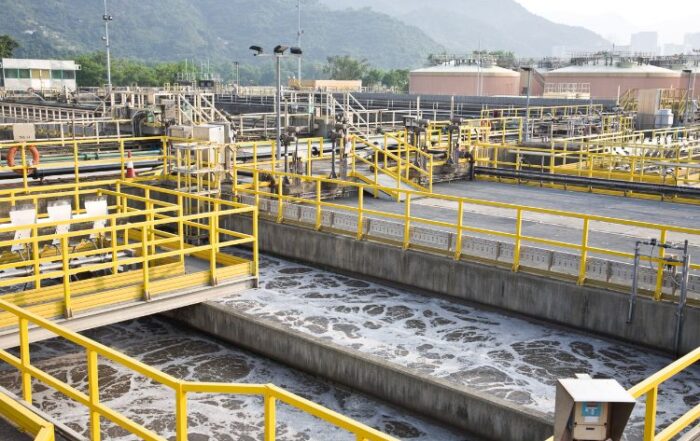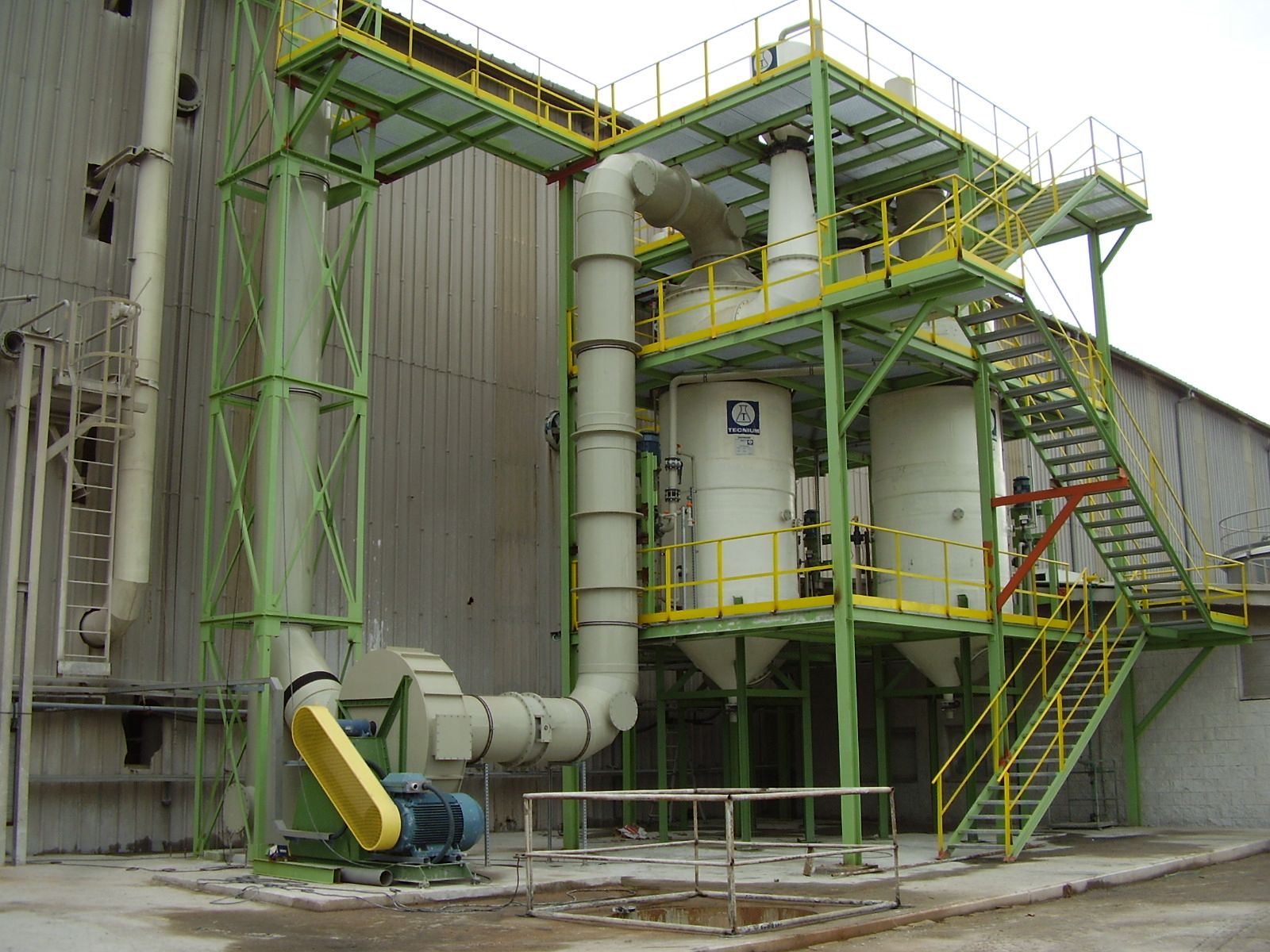

Gas Treatment on Superphosphates Production
The production of phosphate-based fertilizers such as TSP (triplesuperphosphate) or SSP (simplesupephosphate), begins with a first step of attack of phosphate rock in the reactor, the obtained material passes through the Kuhlmann belt, where the reaction continues, ending in the granulator, and finally a drying step. In the four previous stages gas emissions are generated which have to be treated, being in the first two where the intensity and concentration is higher.
The contact of phosphate rock with an acid, normally H2SO4 or H3PO4 generates gaseous emissions. The gases produced are usually (F-) based, resulting from the presence of fluorures in the rock, that during the reaction, are released in the form of HF, SiF4, F2. Also a lot of dust and occasionally H2S and CH3SH are generated. These are the elements to be treated in a gas treatment system.
Two-phase solution
- In a first phase F derivatives and dust are removed through venturi-cyclon systems in series, obtaining as by-products H2SiF6 and SiO2 . This technology allows the recycling of H2SiF6 to the process of rock attack, so the liquid effluents to be treated are minimized. Within this process it is essential to control pH to avoid crystallization problems that could cause clogging of the equipment.
- In case of presence of sulfur derivatives, a second phase is added in which these compounds are neutralized through a chemical scrubber with NaOH and oxidizing agents such as KMnO4 or NaClO.
Principal advantages
- Environmental benefits: F- emissions below 5 mg/Nm3
- Economic benefits: process optimization that allows the generation of by-products that can be reused in the process itself and thus reduce the purchase of reagents.
More information
Give us your contact details and we will advise you on the best solution for your application.
View also
How Gas Scrubbing Technologies Will Drive Decarbonisation in the Chemical Sector
Decarbonisation as the Urgent Challenge for the Chemical Industry The chemical industry is entering one of the most transformative decades in its history. As regulatory pressure intensifies and global climate targets advance, [...]
Tecnium to attend PCH Meetings 2025 in Lyon
Leading Innovation in Chemical Process Equipment Tecnium will participate in the 21st edition of PCH Meetings, the leading international business convention for process, chemical, petrochemical, and pharmaceutical industries, to be held on [...]
Magnetic Drive Pumps: The Science Behind Leak-Free Chemical Transfer
Why Magnetic Drive Technology Matters In industrial environments where safety, reliability, and chemical containment are critical, even a small leak can have major consequences. Traditional centrifugal pumps, which rely on mechanical seals [...]
Biofiltration for Air Pollution Control
Introduction to Biofiltration and Air Pollution Control Air pollution control is a persistent challenge across multiple industries — from wastewater treatment to chemical manufacturing, food processing, and beyond. As regulations grow stricter [...]
ECHA 2025 Report
Why the ECHA 2025 Report Matters The European Chemicals Agency (ECHA) plays a central role in regulating the safe use of chemicals across the European Union. Through its guidance, risk assessments, and [...]
A Key Element for Environmental Protection in WWTPs
Why Gas and Odour Emissions in WWTPs Are an Environmental Issue Wastewater treatment plants (WWTPs) play a critical role in safeguarding public health and the environment. However, the treatment process itself can [...]

